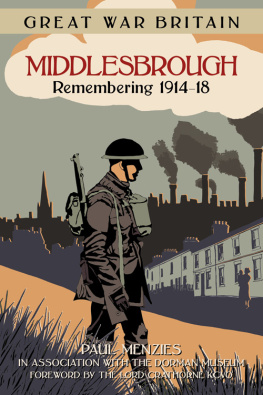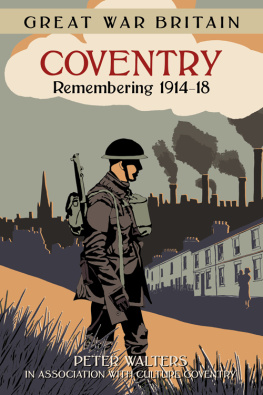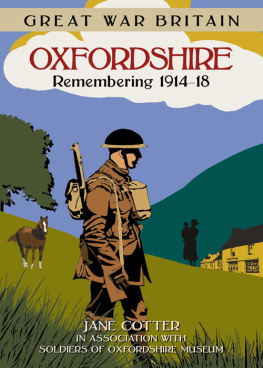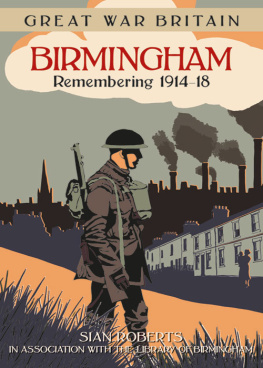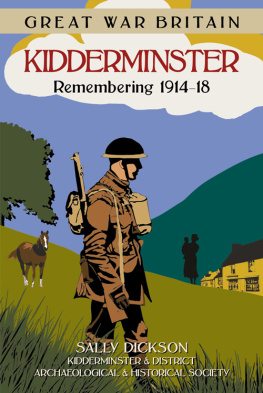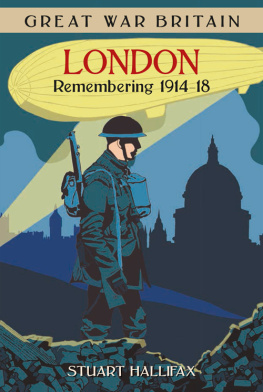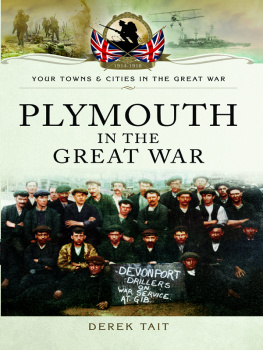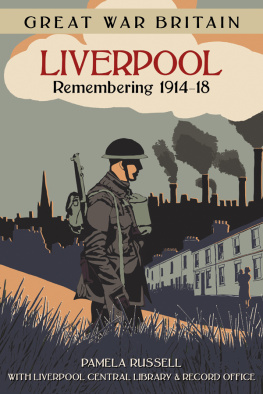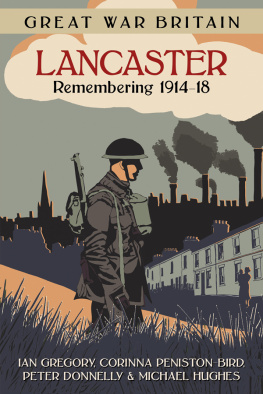
I would like to dedicate this book to my late father, who sadly died during the writing of this book, and to all those from Middlesbrough who experienced the Great War a century ago.
And to my wife, Jackie.
C ONTENTS
by Phil Philo
by The Lord Crathorne KCVO



For more than 100 years the Dorman Museum has been central to Middlesbroughs commemoration of those people from, or associated with, the town who made the ultimate sacrifice in the terrible wars of the twentieth and twenty-first centuries.
The museum was officially opened on 1 July 1904, by the colonel-in-chief of the Yorkshire Regiment, as the Dorman Memorial Museum. It was presented to the town by Sir Arthur Dorman as a memorial to his son, George Lockwood Dorman, and others of the Yorkshire Regiment who lost their lives during the South African or Boer Wars of 18991902. It is one of Middlesbroughs landmarks, and stands alongside the cenotaph, and the associated wall that was originally erected in 1922 as the Middlesbrough war memorial to those who fought and died in the First World War. It was rededicated to include those from the Second World War and later conflicts.
Housed inside are collections that include material representative of the townspeoples experiences of war, both on the home front and the front line; from photographs and letters, military equipment and munitions, medals and commemorative items, to souvenirs and mementos. These artefacts, along with Middlesbrough Councils collections held by its library service and the joint service, Teesside Archives, which it manages on behalf of its Tees Valley partners, and material that the local community have shared and made available, are central to our study and understanding of the past.
Now part of Middlesbrough Councils Cultural Services Section, the Dorman Museum has enjoyed supporting author Paul Menzies in his research and writing of this important new publication about Middlesbroughs Great War effort, and is grateful to the publishers, the History Press, to be selected as the official launch venue for the book. Great War Britain: Middlesbrough contains a wealth of material and stories, much of it told for the first time, and is a fitting tribute to the courage and resilience of the towns people, in this important centenary anniversary of the start of the War to end all wars.
Phil Philo
Senior Curator, the Dorman Museum, 2014
www.dormanmuseum.co.uk
The author has done great service in writing this account of life in Middlesbrough during the First World War. This book takes its place alongside the other excellent local history publications by Paul Menzies. His detailed research into the First World War gives us a fascinating glimpse into wartime life in the Boro. Many of the stories are appearing here in print for the first time.
We learn that, along with the grit and determination, went the hardship and suffering, alleviated in part by the numerous voluntary relief organisations.

Crathorne Hall, south of Middlesbrough, operated as a British Red Cross hospital from 13 November 1914 to 9 July 1917. A total of 423 men were patients there, under the command of Mrs J.L. Dugdale, most men being sent from the military hospital in Newcastle. The Dugdale family met all of the expenses incurred in running the hospital. (Courtesy of The Lord Crathorne)
After conscription started in January 1916 the role of women became even more crucial, particularly in the munitions factories. Their heroic efforts transformed womens lives for ever.
There was a fighting spirit in the town, encouraged and promoted by the mayor and countless others. Schoolchildren helped the war effort by making sandbags; women knitted stockings for our boys at the Front; there were numerous fundraising efforts of all kinds.
As mentioned in the book, Crathorne, where I live, played its part with regular voluntary donations from the workers on the estate to The Prince of Wales National Relief Fund and there was a VAD (Voluntary Aid Detachment) hospital run by my grandmother, Violet Dugdale. Her son Thomas (my father) went to the Front as a young officer in 1917, and she wrote to him there every day. Along with every other mother writing to a son at the Front, she did not know whether her next letter would be the last he ever received.
Over 3,000 men from Middlesbrough died in the conflict, and as we read through the following pages we remember them and their families, and the ultimate sacrifice they made during the Great War.
The Lord Crathorne KCVO
2014
No man has greater love or self-control
Than he who gives his life for that of friend
This he has done and captain of his soul
Played gamely to the end
An extract from a dedication written
for the burial of George Hutton Bowes-Wilson, 1/4th Battalion
Alexandra, Princess of Wales Own Yorkshire Regiment
The personal journey I have taken when writing this book has stretched from a childhood listening to the Great War experiences of older relatives, to my journey to the Western Front last year. Whilst this was for the purpose of research, I also wanted to be able to hold my hands up and say that I had followed in the footsteps of the soldiers 100 years ago. I knew I would have felt uncomfortable writing a book on the Great War, and Middlesbrough, had I not done so.
The most remarkable discovery in my research has been the sheer enormity of the subject in every way. The thousands of graves and names on memorials like the Menin Gate in Ypres, and standing at the grave of the young Middlesbrough footballer, Harry Cook, were both very moving. The beautiful windswept landscape of the Somme seemed so far away from the world he knew as a teacher in North Ormesby, yet as I placed a wooden cross next to his white gravestone, I was the link for a few moments across time and space, between 1917 when he died and today.
Enormity is a word that describes the Great War in every way. Over 3,000 names are on the memorial tablets at Albert Park and, as I discovered, there is an increasing amount of material about the war. When writing a book of this genre there are some key decisions to make before you put pen to paper. For me, it was the choice of approach; I wanted to bring some insight into the lives of those who were here in Middlesbrough, so this is not a military history of the war, and there is not a great deal about battles. Instead this is a detailed history of what it may have felt like for people living in the town at that time. I have tried to cover as many topics as possible, focusing on some that would not normally draw much attention from local historians.
I must apologise to any of the numerous people that I have met in the course of the last three years if I have not included the name of their family member. Space has been very tight in this book, and I have had to restrict named people to those who furthered the story at that point. I have been shown extraordinary kindness by the many people who have helped me out during my research, and it has been a pleasure to have worked with them. I thank them all.
Next page
